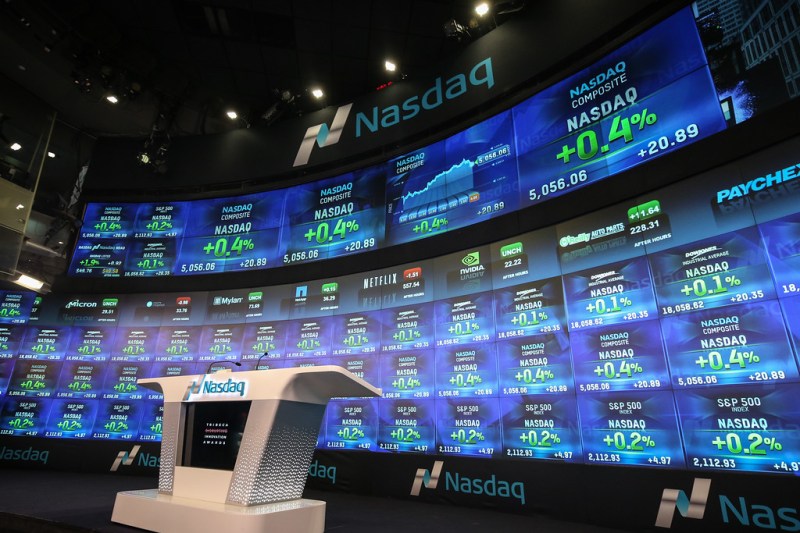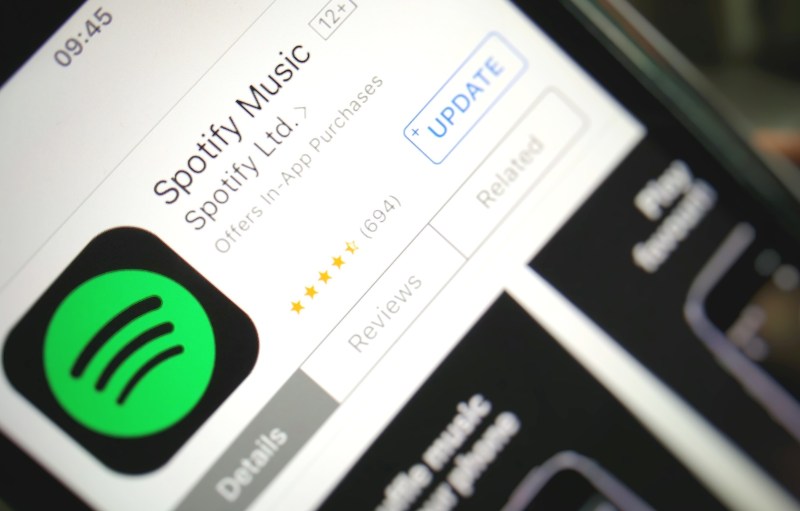Going public is a key milestone for a private company and a time-honored way to raise capital. But from the underwriting process to the legalese-filled SEC filings, the road to an initial public offering (IPO) is a long one. Among the many decisions a company has to make before initiating an IPO, choosing which stock exchange to list on should be relatively straightforward. In the U.S., for example, the traditional options are Nasdaq or the New York Stock Exchange (NYSE). Yet, with a new stock exchange — IEX — on the rise and more direct forms of listing, going public today isn’t as clear-cut as it used to be.
Nasdaq versus NYSE: the duopoly
Both of the major exchanges host successful companies, with Amazon, Microsoft, and Facebook on Nasdaq and Alibaba, Twitter, and Snap on the NYSE. For context, here are some of the largest U.S. IPOs in the past five years, in terms of capital raised.


June 5th: The AI Audit in NYC
Join us next week in NYC to engage with top executive leaders, delving into strategies for auditing AI models to ensure fairness, optimal performance, and ethical compliance across diverse organizations. Secure your attendance for this exclusive invite-only event.
It is no secret that the two exchanges are aggressively courting up-and-coming tech startups. Both offer a wide range of services, including bootcamps, networking, branding, marketing, PR support, and more to lure IPO candidates to their trading floors.
Nasdaq recently opened an Entrepreneurial Center in San Francisco, where it hosts a series of PR events — a recent one featured actress and entrepreneur Sarah Michelle Gellar ringing the bell remotely. The center also launched a Milestone Makers program, which pairs early-stage startups with mentors to help them accomplish specific goals. Coaching startups early on is a smart move in terms of building strong relationships with potential IPO candidates.
When it comes to the NYSE, the exchange modified its listing standards about 10 years ago to accept more companies. “Back when Microsoft, Amazon, and Apple became public companies, they were not eligible to list on the NYSE, as our listing standards required multiple years of positive net income prior to listing,” said NYSE head of global listings John Tuttle, in an interview with VentureBeat.

Above: New York Stock Exchange (NYSE)
But even though the NYSE has modified its listing standards, its annual listing fees remain higher than Nasdaq’s — between $59,500 and $500,000, compared to $45,000 to $155,000 for Nasdaq. Fees on both exchanges vary based on the number of outstanding shares the company has.
“Our fees are all inclusive, so we don’t charge companies for secondary offerings of an already listed class, which is something the NYSE charges for and can be very expensive depending on circumstances,” Nasdaq vice chairman Bruce Aust told VentureBeat.
Hopping over to the other side
But no matter how many statistics they push out to showcase their might, both Nasdaq and the NYSE have lost listed companies to the other — the most recent example was human resources software company Workday, which switched from the NYSE to Nasdaq.
Other NYSE-listed companies that have switched over to Nasdaq include Walgreens, Marriott, American Airlines, T-Mobile, and News Corp, for a total $1.2 trillion in market cap switch since 2000.

Above: Nasdaq
The NYSE’s Tuttle claims that this is often due to companies falling below the threshold of the NYSE’s listing standards, which results in delisting. And the fence-hopping goes both ways. The total market cap of companies that have transferred from Nasdaq to NYSE since 2000 is $1.1 trillion — examples include Oracle, IMAX, Level 3, United Airlines, and Infosys.
According to a Nasdaq spokesperson, NYSE companies were not allowed to switch exchanges until 2005. A NYSE spokesperson countered the statement by saying that there was no NYSE rule prohibiting transfers prior to 2005.
Looking at U.S. tech companies that have taken the IPO plunge, Nasdaq accounts for about $5.1 trillion in market cap, while the NYSE counts approximately $3 trillion, according to PitchBook.
A new kid on the block
While Nasdaq and the NYSE battle over the big names, IEX is gradually gaining ground. Cofounded in 2012 by CEO Brad Katsuyama, IEX initially operated as an off-exchange marketplace before launching a national stock exchange in the U.S. in September 2016.
Prior to starting IEX, Katsuyama ran electronic trading for the Royal Bank of Canada, where he and his team uncovered structural loopholes in the stock market — specifically, the practice of stock exchanges selling speed advantages to high-speed traders. The team founded IEX to try to create a fairer and simpler stock exchange. The effort caught the eye of nonfiction writer Michael Lewis, who chronicled the genesis of IEX in his book Flash Boys.

Above: IEX cofounder and CEO Brad Katsuyama
Later this year, the New York-based exchange will begin listing companies that have chosen to switch over from other exchanges. “There are no switching fees or any other superfluous charges, for that matter,” wrote IEX head of listings Sara Furber, in an email to VentureBeat. “IEX just charges one simple flat-fee of $50,000 per year.” Furber was previously managing director at Morgan Stanley. Regarding IPOs, “We plan on supporting them in the future,” she said.
IEX said that it will give five years of free listings to the first round of switchers, which it is calling “Founding Issuers,” and says there are already several companies preparing to make the switch. Although IEX declined to name those companies at this time, the exchange is gradually strengthening its ties to Silicon Valley’s tech community and recently named Snap chairman Michael Lynton to its board.
One potential switch could be Nasdaq-listed Wynn Resorts, as CEO Steve Wynn, who is an investor in IEX, has expressed interest in doing so. Other investors backing IEX include Spark Capital, Bain Capital Ventures, Sapphire Ventures, and Iconiq Capital, which all have an ownership stake in the exchange.
While there are other U.S.-based stock exchanges, none has yet managed to take on the two New York-based giants. Whether IEX will be able to successfully position itself as a “third choice” remains to be seen.
Underwriters and direct listings
Picking an exchange is important, but preparing for the actual IPO is even more demanding. Traditionally, private companies will enlist the services of investment bankers to carry out the underwriting process that prepares them for an initial public offering. This includes pricing the shares, filing all regulatory documents with the SEC, and prepping the roadshow to court investors because, at the end of the day, an IPO is executed to raise capital.
Some of the biggest underwriters include Goldman Sachs, Morgan Stanley, Credit Suisse, and Merrill Lynch. “We always compete very aggressively to win the lead IPO mandate from a potential issuer,” said Ryan Limaye, Goldman Sachs co-head of technology investment banking, in an interview with VentureBeat. “But once the company selects its underwriting group, we collaborate very closely with our other underwriting banks as a team to deliver the best outcome for the client.”
While the majority of private companies hire investment bankers to carry out the underwriting process, some, like Spotify, are considering a direct listing — bypassing the underwriting process altogether. The music-streaming company has expressed interest in listing directly on the NYSE, meaning it would start trading its shares on the exchange without conducting an initial public offering.

Above: Spotify app
According to a recent report by PwC, “Direct listings allow companies to avoid underwriter fees as well as dilution to existing holders resulting from newly issued stock.” However, bypassing the underwriting process also means facing certain market risks, as there is no period of price discovery or equity research from the underwriting banks, which can open shares to price volatility.
To list or not to list, that is the question
Not all tech unicorns are rushing to go public. Some, like Uber and Airbnb, are choosing to remain private for the time being. But delaying an exit means more static shares and illiquidity for shareholders, which is why many companies, including AngelList, eShares, and Equidate, have tried to create a more dynamic marketplace for private companies. Back in 2004, Nasdaq created the Nasdaq Private Market to provide liquidity solutions.
There are also constraints that come with going public. Venture capitalist Tim Draper said that both Congress and the SEC have bombarded IPO companies with expensive and restrictive regulations since the market crash of 2001. He pointed to the Sarbanes-Oxley Act of 2002, in particular, which he blames for a loss of risk-taking and economic competitiveness. Draper added that public companies often have to pay about $5 million a year just to comply with these regulations.
Whichever way you look at it, the IPO scene is undergoing tremendous changes. Companies have more options now, whether that means remaining private, filing for an IPO, listing directly, or switching over to a new stock exchange. The jury is still out on whether all these choices will be beneficial or detrimental in the long term.

